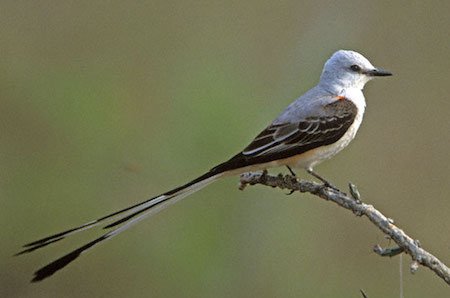Free and Sovereign State of Coahuila de Zaragoza

Birding Coahuila
Coahuila, formally Coahuila de Zaragoza is one of Mexico’s 31 component states. It is located in the north of the country.
To the north, Coahuila accounts for a 512 kilometers (318 mi) stretch of the U.S. – Mexico border, adjacent to the U.S. state of Texas along the course of the Rio Grande (Río Bravo del Norte). Coahuila also borders the Mexican states of Nuevo León to the east, Zacatecas and San Luis Potosi to the south, and Durango and Chihuahua to the west. With an area of 151,571 square kilometers (58,521.9 sq mi), it is the nation’s third-largest state.
The Sierra Madre Oriental runs northwest to southeast through the state, and the higher elevations are home to the Sierra Madre Oriental pine-oak forests.East of the range, the land slopes gently toward the Rio Grande, and is drained by several rivers, including the Salado and its tributary the Sabinas. The Tamaulipan mezquital, a dry shrubland ecoregion, occupies the western portion of the state, and extends across the Rio Grande into southern Texas.The portion of the state west of the Sierra Madre Oriental lies on the Mexican Plateau, and is part of the Chihuahuan Desert. The Bolsón de Mapimí is a large endorheic basin which covers much of the western portion of the state and extends into adjacent portions of Chihuahua, Durango, and Zacatecas. The Nazas River, which flows east from Durango, and the Aguanaval River, which flows north from Zacatecas, empty into lakes in the Bolsón. Torreón, the most populous city in the state, lies on the Nazas in the irrigated Laguna Region, the (Comarca Lagunera), which straddles the border of Coahuila and Durango.The state contains two biosphere reserves. Maderas del Carmen lies on the northern border of the state, and includes sections of the Chihuahuan desert and sky islands of pine-oak forest in the Sierra del Carmen. The springs, lakes, and wetlands of Cuatro Ciénegas lie west of Monclova on the west slope of the Sierra Madre.
The state is largely arid or semi-arid, but the rivers of the state support extensive irrigated agriculture, particularly cotton. The Parras district in the southern part of the state produces wines and brandies. The pine-oak forests of the Sierra Madre produce timber.
-
Zona del silencio
Satellite ViewZona del silencio is located in Durango and Coahuila in the north of Mexico and is a dessert ecosystem.
-
Wikipedia
GNU Free Documentation License
http://en.wikipedia.org/wiki/Coahuila
-
Amphibians and Reptiles of the State of Coahuila
| By Julio A Lemos-Espinal & Hobart M Smith | Universidad Nacional Autónoma de México | 2007 | Paperback | 550 pages, Maps, colour photos, figures | ISBN: 9789709000405 Buy this book from NHBS.com
-
Museo de las Aves de Mexico
WebsiteMéxico is host to about 1,000 species of birds, of 9,000 existing in the world. In these pages you will find data and pictures on over 70% of them, from the collection at the Museum of Mexican birds…
-
BR Cuatro Ciénegas de Carranza
InformationSatellite ViewCuatro Ciénegas is an official Mexican biological reserve. The biological reserves are small ecosystems with unique fauna and flora that are highly protected by government authorities. Scientists working in the basin and some local residents claim to have observed reduced spring discharge and a decrease in surface water in the Cuatro Ciénegas Basin (CCB) in recent years, although these changes have not been well documented in the scientific literature. Some have blamed the possible drying out on changes in climate and others have ascribed it to the introduction of large scale agriculture in adjacent valleys over the past two decades. -
BR Mapimí
InformationSatellite ViewPor sus características de aridez y vegetación contiene ecosistemas representativos del desierto chihuahuense y de la subprovincia geográfica de Mapimí… -
NP Cumbres de Monterrey
InformationSatellite ViewThe Cumbres de Monterrey is a national park of Mexico located in the northern portion of the Sierra Madre Oriental near the city of Monterrey, Nuevo León. The park includes the famous symbol of Monterrey, the signature skyline known as Cerro de la Silla (Saddle Mountain). The park consists of rugged terrain boasting steep mountains reaching an elevation of 2,260 meters (7,410 feet) above sea level, deep canyons, rivers and waterfalls. -
NR El Carmen
PDF ArticleSatellite View
-
Aventurate Coahuila
Tour OperatorThe Parrot's Tour, Las Cumbres Ranch are to 8 km from Jam -
Mexico-Birding Tours
Tour Operator
-
2004 [05 May] - Phil & Charlotte Benstead
Report…The key species to see on this itinerary are the following regional endemics not found elsewhere: maroon-fronted parrot, red-crowned parrot, Tamaulipas pygmy-owl, tawny-collared nightjar, tufted jay, Altamira yellowthroat (though also in northern Veracruz), crimson-collared grosbeak and Worthen's sparrow… -
2008 [12 December] - Paul van Els
ReportThis trip focused mostly on the cloud forest areas of northern San Luis Potosí and southern Tamaulipas, but also included days on the Tamaulipas coast, in the mountainous area in Nuevo León and the desert south of Saltillo, Coahuila. I concentrated mostly on bird species endemic to Mexico or the region and missed on a previous trip to Oaxaca/Veracruz.
-
Birds of Cuatro Ci
WebsiteThis paper presents data for 25 bird species, 15 of which are new locality records from the Valley of Cuatro Ci -
The Avifauna od the Sierra del Carmen of Coahuila
PDF Article1.54 Vol. 57 THE AVIFAUNA OF THE SIERRA DEL CARMEN OF COAHUILA, MEXICO By ALDEN H. MILLER In the desert of northern Coahuila, Mexico, lies a rugged mountain system collec- tively known as the Sierra de1 Carmen. The high northern part of this sierra is about 30 miles in extent along a north-northwest axis and it supports conifer and pine-oak vegetation that is well isolated from other such ecologic formations of significant area1 extent...

